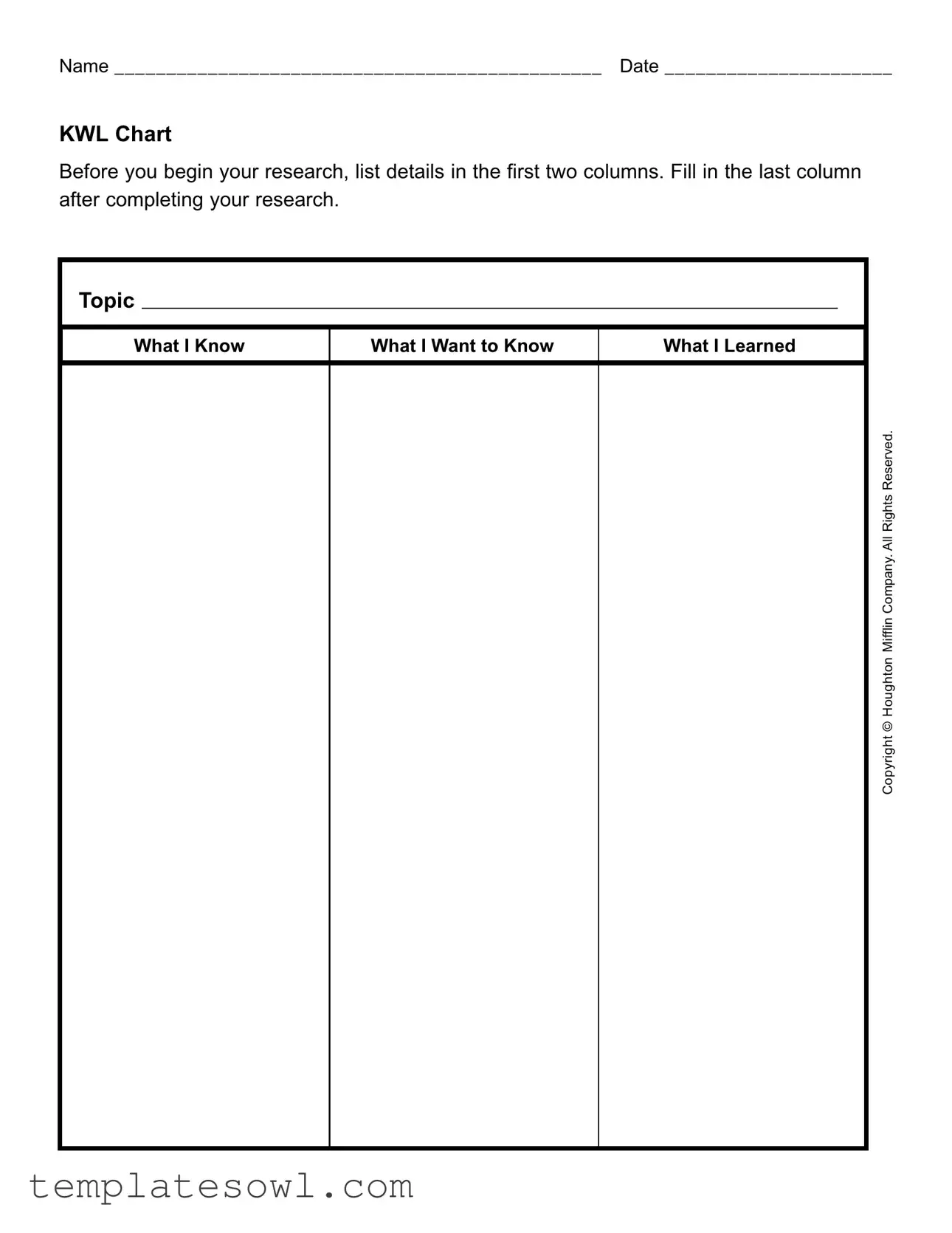What is a KWL Chart?
A KWL Chart is a tool used for organizing information before and after conducting research. It consists of three columns: "What I Know," "What I Want to Know," and "What I Learned." The first two columns are filled out before beginning any research, while the last column is completed after gathering new information.
How do I fill out a KWL Chart?
Start by writing the topic you are interested in at the top of the chart. In the "What I Know" column, list everything you already know about the topic. Next, move to the "What I Want to Know" column and write down any questions or aspects of the topic you want to explore further. After conducting your research, summarize your findings in the "What I Learned" column.
Can a KWL Chart be used for any subject?
Yes, a KWL Chart is versatile and can be applied to various subjects, including science, history, literature, and more. It helps learners organize their thoughts and track their knowledge as they explore new topics.
Is there a specific format I should follow when using a KWL Chart?
No strict format is required for a KWL Chart. You can create it on paper or digitally. The essential aspect is to maintain three clear columns that represent the categories of knowledge you want to track.
How can I benefit from using a KWL Chart?
Using a KWL Chart can enhance comprehension and retention of information. It encourages active engagement with the material and helps in identifying gaps in understanding. Additionally, it provides a clear framework for organizing research and reflecting on what has been learned.
Is there a recommended age group for using a KWL Chart?
KWL Charts can be beneficial for all ages. Children in elementary school can use simplified versions, while older students and adults can take advantage of more complex applications tailored to their research needs. The approach can adapt based on the user's experience and focus.

